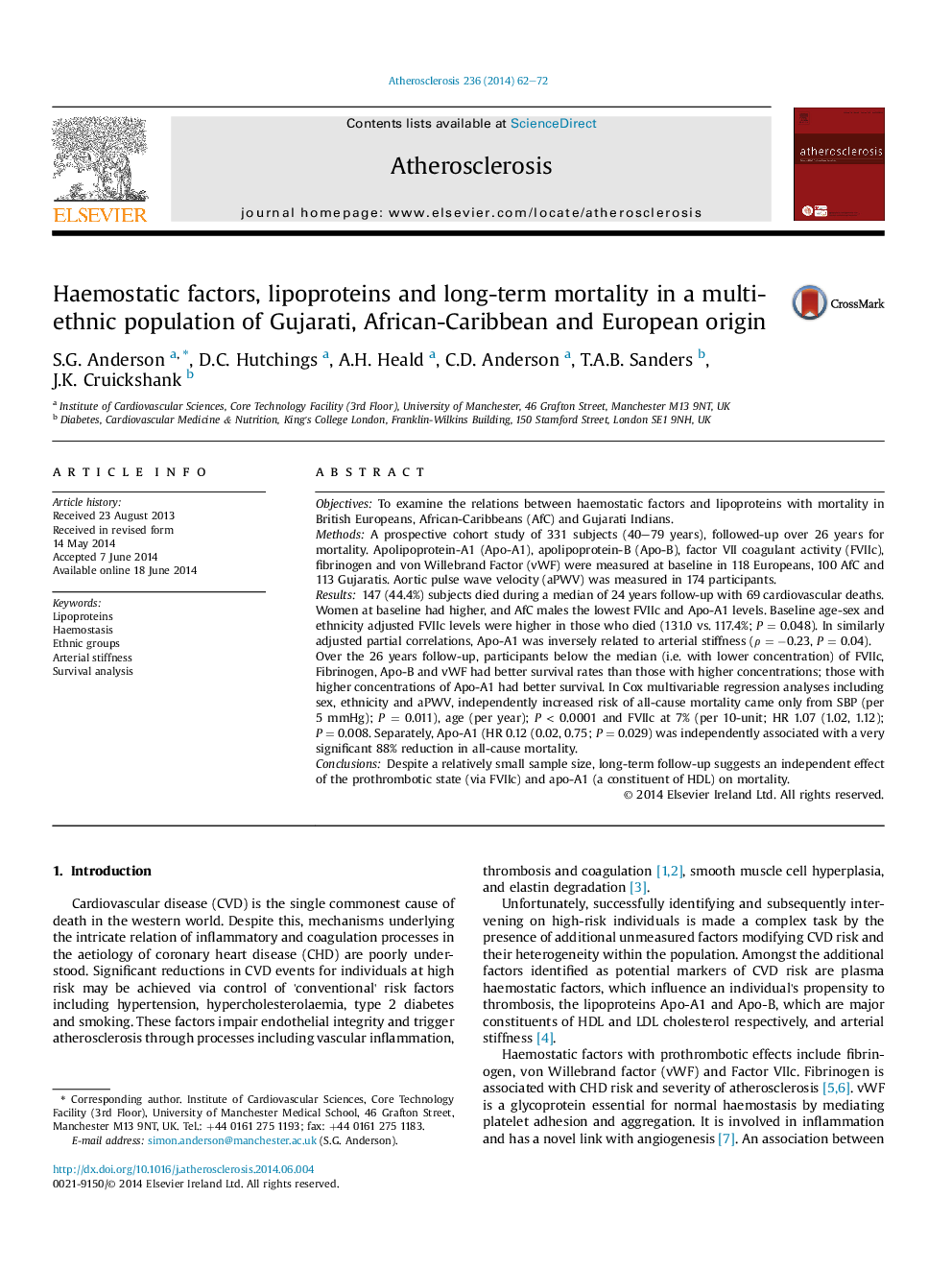| کد مقاله | کد نشریه | سال انتشار | مقاله انگلیسی | نسخه تمام متن |
|---|---|---|---|---|
| 5944877 | 1172346 | 2014 | 11 صفحه PDF | دانلود رایگان |
- Mortality, haemostatic factors and lipoproteins were examined in a multi-ethnic cohort with varying cardiovascular risk.
- We found differences in Apo-A1 and factor VIIc levels by ethnicity.
- Increasing levels of Apo-A1 were inversely related to arterial stiffness and all-cause mortality.
- Increasing levels of factor VIIc were directly related to increased cardiovascular mortality.
- Ethnic variation in key coagulation and lipid indices may play a role in cardiovascular outcomes and mortality.
ObjectivesTo examine the relations between haemostatic factors and lipoproteins with mortality in British Europeans, African-Caribbeans (AfC) and Gujarati Indians.MethodsA prospective cohort study of 331 subjects (40-79 years), followed-up over 26 years for mortality. Apolipoprotein-A1 (Apo-A1), apolipoprotein-B (Apo-B), factor VII coagulant activity (FVIIc), fibrinogen and von Willebrand Factor (vWF) were measured at baseline in 118 Europeans, 100 AfC and 113 Gujaratis. Aortic pulse wave velocity (aPWV) was measured in 174 participants.Results147 (44.4%) subjects died during a median of 24 years follow-up with 69 cardiovascular deaths. Women at baseline had higher, and AfC males the lowest FVIIc and Apo-A1 levels. Baseline age-sex and ethnicity adjusted FVIIc levels were higher in those who died (131.0 vs. 117.4%; PÂ =Â 0.048). In similarly adjusted partial correlations, Apo-A1 was inversely related to arterial stiffness (ÏÂ =Â â0.23, PÂ =Â 0.04).Over the 26 years follow-up, participants below the median (i.e. with lower concentration) of FVIIc, Fibrinogen, Apo-B and vWF had better survival rates than those with higher concentrations; those with higher concentrations of Apo-A1 had better survival. In Cox multivariable regression analyses including sex, ethnicity and aPWV, independently increased risk of all-cause mortality came only from SBP (per 5Â mmHg); PÂ =Â 0.011), age (per year); PÂ <Â 0.0001 and FVIIc at 7% (per 10-unit; HR 1.07 (1.02, 1.12); PÂ =Â 0.008. Separately, Apo-A1 (HR 0.12 (0.02, 0.75; PÂ =Â 0.029) was independently associated with a very significant 88% reduction in all-cause mortality.ConclusionsDespite a relatively small sample size, long-term follow-up suggests an independent effect of the prothrombotic state (via FVIIc) and apo-A1 (a constituent of HDL) on mortality.
Journal: Atherosclerosis - Volume 236, Issue 1, September 2014, Pages 62-72
